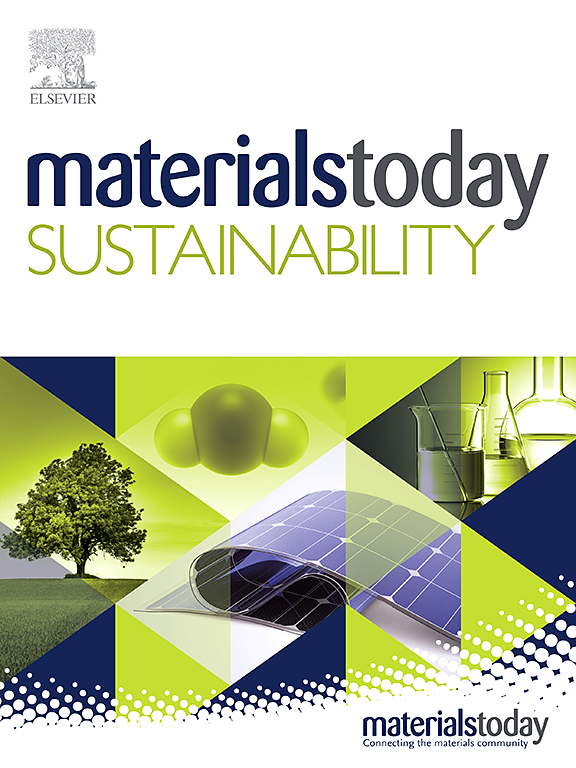铜气体扩散电极在高反应速率下用于二氧化碳还原的稳定性
IF 7.9
3区 材料科学
Q1 GREEN & SUSTAINABLE SCIENCE & TECHNOLOGY
引用次数: 0
摘要
从二氧化碳中电合成增值化学品为气候变化、可再生能源使用和原材料短缺提供了可持续的解决方案。研究了在溅射沉积铜气体扩散电极(GDEs)上,通过CO2还原反应快速制备乙烯(C2H4)和乙醇(CH3CH2OH)。gde的催化剂层厚度随沉积时间的变化对电极的稳定性有显著影响。在测试过程中,观察到选择性变化,其中C2H4和CH3CH2OH选择性降低,而CH4和H2选择性增加。然而,通过中断和重新启动极化的交替操作完全恢复了C2H4和CH3CH2OH的选择性。在线产物分析的Operando x射线吸收光谱显示,在恒定电位下,优势氧化态Cu逐渐还原为金属态Cu,同时C2H4选择性下降。在交替操作下,保留了部分氧化Cu,并保持了C2H4的选择性。这一结果表明阳离子Cu物种与C2H4生产之间存在密切联系,为稳定这些物种以延长C2H4生产提供了见解。本文章由计算机程序翻译,如有差异,请以英文原文为准。

Insights into the stability of copper gas diffusion electrodes for carbon dioxide reduction at high reaction rates
Electrosynthesis of value-added chemicals from CO2 offers a sustainable solution to climate change, renewable energy use, and raw material shortages. This study examines the high-rate production of ethylene (C2H4) and ethanol (CH3CH2OH) through CO2 reduction reaction on copper (Cu) gas diffusion electrodes (GDEs) made by sputtering deposition. The catalyst layer thickness of the GDEs, adjusted by deposition time, significantly affects the electrode stability. During testing, a selectivity shift is observed, where C2H4 and CH3CH2OH selectivity decreases, while CH4 and H2 selectivity increases. However, an alternating operation by interrupting and restarting the polarization fully restores the C2H4 and CH3CH2OH selectivity. Operando X-ray absorption spectroscopy with online product analysis reveals that at constant potentials, the dominant oxidized Cu species gradually reduces to metallic Cu, along with a decline in C2H4 selectivity. Under alternating operation, some oxidized Cu species remains, and the C2H4 selectivity is also preserved. This outcome suggests a close link between cationic Cu species and C2H4 production, offering insights into stabilizing these species for prolonged C2H4 production.
求助全文
通过发布文献求助,成功后即可免费获取论文全文。
去求助
来源期刊

Materials Today Sustainability
Multiple-
CiteScore
5.80
自引率
6.40%
发文量
174
审稿时长
32 days
期刊介绍:
Materials Today Sustainability is a multi-disciplinary journal covering all aspects of sustainability through materials science.
With a rapidly increasing population with growing demands, materials science has emerged as a critical discipline toward protecting of the environment and ensuring the long term survival of future generations.
 求助内容:
求助内容: 应助结果提醒方式:
应助结果提醒方式:


